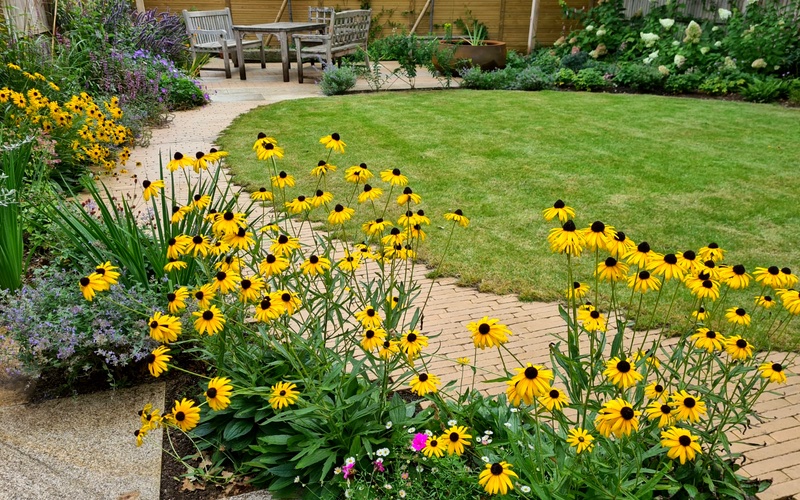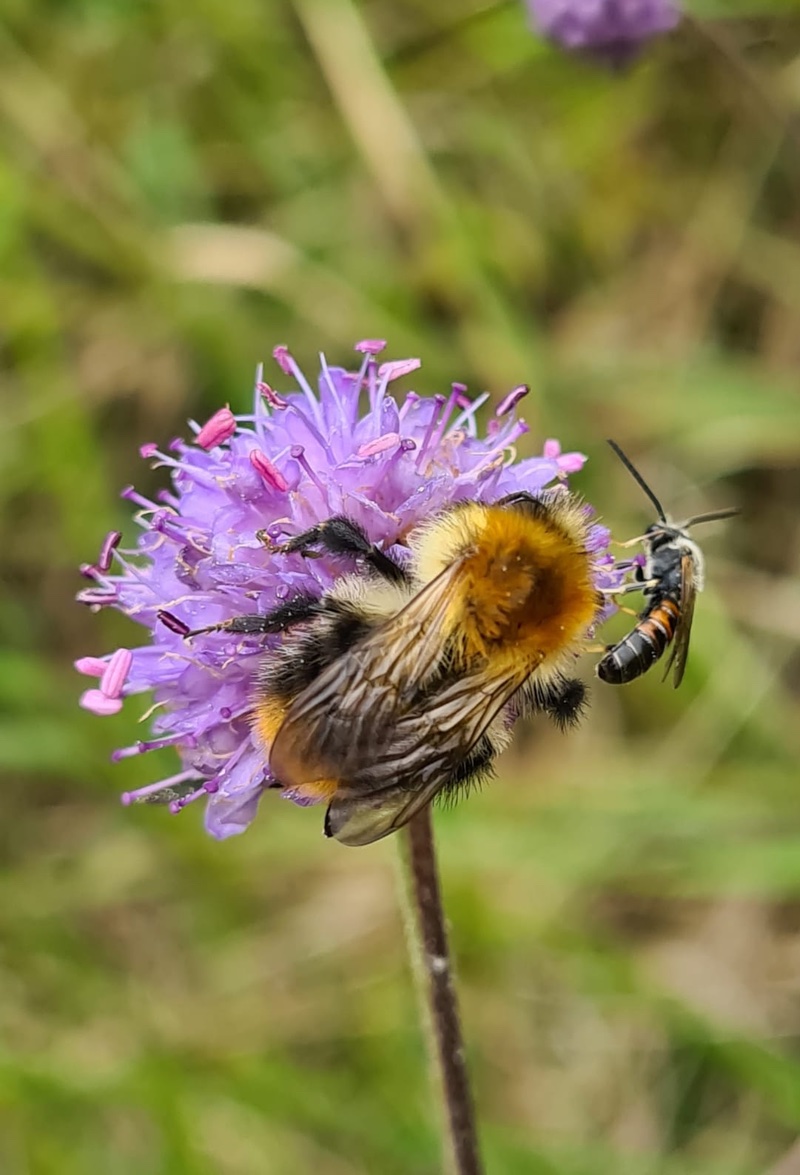THE LANDSCAPING SOLUTIONS BLOG
Welcome to our Blog. Inspiration, updates and industry trends from the team at Landscaping Solutions.
BEWARE GREENWASHING
There are better ways to improve a company’s carbon footprint than carbon offsetting and mass tree planting schemes, says Landscaping Solutions MD Ben West.

Large companies will often offset their carbon footprint through mass tree planting schemes.
It’s wonderful to see once marginalised environmental issues becoming mainstream concerns, but we must ensure that action in these areas is both genuine and focused in the right direction. We must beware of ‘greenwashing’. Unscrupulous marketing departments have latched on to the fact that environment and sustainability issues are making headlines and are exploiting consumer naivety, a lack of consensus and toothless regulatory frameworks to increase sales and enter new markets. This seeds mistrust, confusion and apathy in the consumer. Research has shown that consumers can become indifferent or indeed harbour negative feelings towards green marketing, legitimate or otherwise, following sustained exposure to greenwashing.
Companies can declare sustainable credentials through carbon offsetting. What is carbon offsetting? In the simplest terms it is the balancing out of an individual’s or company’s carbon emissions by their funding an activity that involves the sequestering of carbon. A plane passenger travelling from London to Amsterdam can ‘offset’ a proportion of the carbon produced by that flight against the carbon sequestered by a tree planting scheme they have funded. Offsetting as part of a long-term plan for culture change is to be admired and encouraged but all too often these schemes are reminiscent of the absent father sending money to the kids whilst he’s away on ‘business’ with the secretary. Offsetting schemes assuage guilt without addressing the underlying issues - which is probably why fossil fuel companies like them so much.

Some airlines use tree planting schemes so they can offer passengers the opportunity to offset a proportion of the carbon produced by their flight.
Can we really buy our way out of the climate crisis? Carbon is best left where it is - in the ground. It’s not enough to carry on business as usual whilst throwing money at offsetting schemes which are at best well-intentioned but ineffective and at worst cynical and damaging. A better policy is to protect existing natural systems whilst rewilding wherever possible. The best way to plant trees is to allow them to regenerate naturally. Jays and squirrels plant trees throughout the autumn for free. This is much more sustainable than armies of trees planters driving to remote sites and much more likely to succeed.
Take a look at the images of HS2’s failed attempts to greenwash the impact of their atrocities in the Chilterns; fields full of plastic tubes containing dead and dying saplings. Remember that the thorn is the mother of the oak; a tangle of thorny scrub (possibly the most undervalued of all our native habitats), consisting of hawthorn, dog rose, blackthorn and bramble is a far more effective nurse to the species that will eventually become climax woodland: ash, oak and beech.
In any case we shouldn’t get too fixated on tree planting as a panacea for all our climate and biodiversity ills. We need a diverse mosaic of habitats to contribute to carbon fixing and biodiversity gains. Woodland is well down the pecking order when it comes to holding carbon in the landscape. Seagrass meadows, mangroves and salt marshes are all examples of habitat that are ahead of woodlands in the carbon fixing stakes. Top of the list are peatlands: tundra, bogs, fens, moorland, meres and mires. These are the very habitats that some elements of our industry are keen to see relocated and releasing carbon in pots, planters and borders up and down the country. We damage these habitats, and unlock carbon in the process, when we disturb them. Disturbance includes planting trees on them, as well as on heathland, ancient woodland and a host of other fragile and threatened habitats. This has happened throughout the twentieth century in this country and may continue should we blindly pursue ill-conceived carbon offsetting schemes or political promises geared to gaining the popular vote at the ballot box.
PROS OF PERMACULTURE
Landscaping Solutions MD Ben West explains what permaculture is and its sustainability benefits.

An example of permaculture garden design, built and maintained by Landscaping Solutions.
Last month I started to consider steps we might take, in lieu of top down leadership, to fashion solutions to the ‘sustainability problem’. Those in the industry looking to cut a path toward adopting fully regenerative practices have a ready sharpened tool in the form of ‘permaculture’, a system that can be applied to garden design as well as every other aspect of our lives. Permaculture design offers guidelines by which we can operate sustainably on a personal level and positively influence the actions of our clients.
Permaculture recognises the sustainability problem is rooted in the prevalence of economic models which overlook diverse, traditional and local operations in favour of monolithic global systems dependent on mass consumption of fossil fuels and resulting in cultural and environmental degradation. Permaculture eschews the global model and works to preserve and enhance the best of the existent. In short, it is the design of sustainable human habitats.
Australians Bill Mollison and David Holmgren introduced the concept with their 1978 book ‘Permaculture One’. They saw the current economic system as flawed and took inspiration from the propensity of natural ecosystems toward rejuvenation. Permaculture design closely observes nature, notes the connections between its manifold elements and uses these relationships to inform its work. It is opposed to the myth of separation and the harmful ‘survival of the fittest’ concept of nature in favour of a view of the natural world as a host of symbiotic relationships and interconnected ecosystems.

The difference between ‘standard’ garden or landscape design and permaculture design lies with the lens through which the decision making process is viewed - permaculture ethics. Simply stated, these are: Earth care, people care and fair shares. These principles inform all design choices. Earth care acknowledges our dependence on a healthy planet for survival and advocates its veneration and conservation. People care recognises the physical and emotional needs of modern humanity, and looks to utilise technology and intelligent design to avoid problems that made formerly sustainable modes of living untenable. Fair shares asserts the finite nature of the Earth, the need to establish limits to human consumption and balanced distributions of ‘wealth’.
Much modern garden and landscape design revolves around making things pretty rather than useful. Many plans please the eye but lack technical detail or practical function. We should not reject the aesthetic; rather, this aspect should flow naturally from a meticulously researched and beautifully realised design. Permaculture is all about the details.
This pragmatism is evident in the key concepts of ‘zones’ and ‘sectors’. Zoning brings elements requiring most attention closest to centres of human activity; vegetables and fruit close to the kitchen, for example. Less frequented areas are set aside for lower maintenance features. Sectoring considers the influence of exterior factors such as wind, rainfall, light, views, local flora, fauna and architecture, and incorporates these into the design to create beneficial connections between the elements. The needs of one are met by the outputs of another; soft vegetative prunings become mulch via the compost heap, for example. Each element performs multiple functions thus maximising the overall efficiency of the whole. The aim is to form a ‘closed system’ in which energy, nutrients and resources are recycled rather than lost. Like a natural ecosystem, nothing goes to waste and everything has value.
In order to achieve our regenerative goals, we must work wisely with what we have rather than expend valuable energy in a protracted and dysfunctional struggle to bend nature to our will.
Visit www.permaculture.org.uk for further information and feel free do drop us a line with your thoughts and feedback on Ben’s article at info@landscapingsolutionsltd.co.uk.